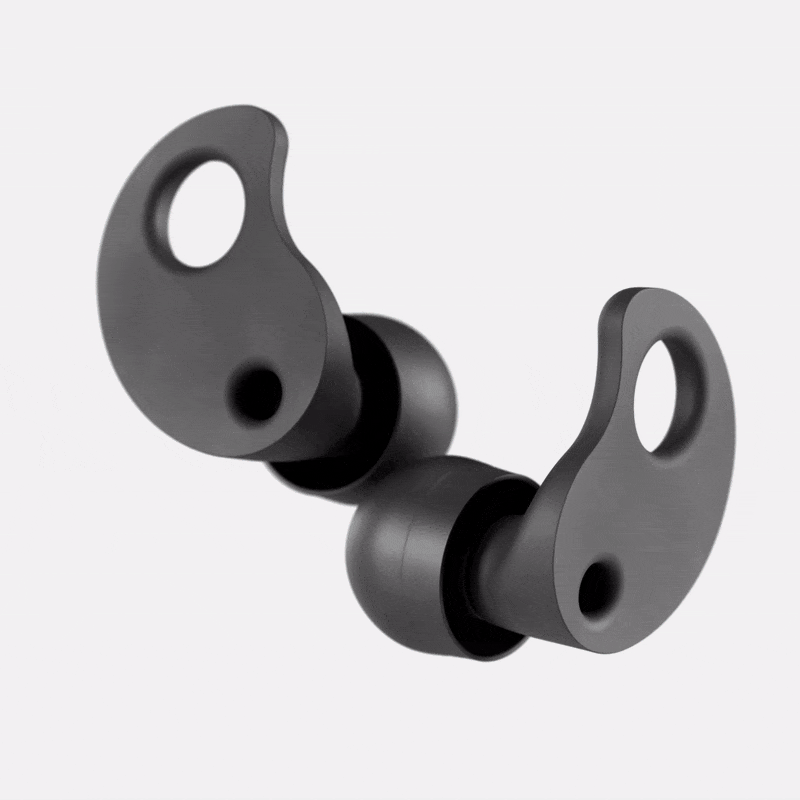Can Earplugs Help with Misophonia?
If certain sounds make your skin crawl—like someone chewing, typing, or even breathing—you’re not alone. You may be one of the millions of people affected by Misophonia, a condition where specific sounds trigger intense emotional or physical reactions. But can something as simple as a pair of earplugs really help?
The short answer: Yes, in many cases earplugs can help people with Misophonia, especially when thoughtfully designed and used as part of a daily toolkit for managing sound sensitivity.
What Is Misophonia?
Misophonia (which literally means “hatred of sound”) is a sound sensitivity disorder where everyday noises—often called “trigger sounds”—provoke a strong emotional reaction. These triggers vary from person to person but commonly include:
- Chewing or lip-smacking
- Keyboard typing
- Sniffling or throat clearing
- Pen clicking
Studies suggest that Misophonia affects anywhere from 6% to 20% of the population depending on diagnostic criteria and awareness levels (Dozier et al., 2017).
How Is Misophonia Different from Hyperacusis or Phonophobia?
While they all fall under the umbrella of sound sensitivity, these conditions are not the same:
- Hyperacusis is an increased sensitivity to the volume or intensity of sounds.
- Phonophobia is a fear of sound, often linked with anxiety and anticipatory distress.
- Misophonia is more about emotional reactivity to specific sounds.
It’s also worth noting that ADHD, Autism Spectrum Disorder (ASD), and Sensory Processing Disorders often coexist with sound sensitivities—including Misophonia. In fact, children and adults with ADHD or Autism may be more likely to experience sensory overload.
Can Earplugs Help With Misophonia?
Earplugs aren't a cure, but they can absolutely help. Many people with Misophonia benefit from discreet, low-profile earplugs that reduce the volume of trigger sounds without cutting off all communication or awareness.
Here’s why earplugs can be effective:
- Noise Reduction: Soften triggering noises without full isolation.
- Environmental Control: Reduce anxiety by controlling auditory input.
- Discreet & Stylish: Options like CURVD Cliq or CURVD Everyday offer fashion-forward solutions.
- Stress Relief: Reduce nervous system fatigue by lowering exposure to triggers.
What to Look for in Earplugs for Misophonia
Foam earplugs may block out too much and feel isolating. Instead, try high-fidelity plugs like CURVD Cliq for volume balance without sound distortion. For daily wear, CURVD Everyday is sustainable, comfortable, and stylish.
Ideal features for Misophonia-friendly earplugs:
- Comfortable for long-term wear
- Subtle and fashionable design
- Balanced noise reduction
- Easy to clean and eco-conscious
Other Tips to Manage Misophonia
- White Noise: Mask triggers with ambient or nature sounds
- CBT: Reframe your response to triggering noises
- Support: Join a community for shared experiences
- Communication: Let people know about your sound sensitivity
Final Thoughts: Are Earplugs a Viable Tool?
Yes—earplugs can be a powerful part of your Misophonia management toolkit. Tools like CURVD Cliq and CURVD Everyday bring style, sustainability, and sound relief together for real-world comfort.
Sources:
- Dozier, T.H., & Morrison, K.L. (2017). Misophonia: Diagnostic Criteria for a New Psychiatric Disorder. PsyArXiv.
- Kumar, S., Tansley-Hancock, O., Sedley, W., et al. (2017). The Brain Basis for Misophonia. Current Biology, 27(4), 527–533.
- Schroder, A., Vulink, N., & Denys, D. (2013). Misophonia: Diagnostic Criteria for a New Psychiatric Disorder. PLOS ONE, 8(1), e54706.
Explore solutions that feel good and look good at CURVD.




